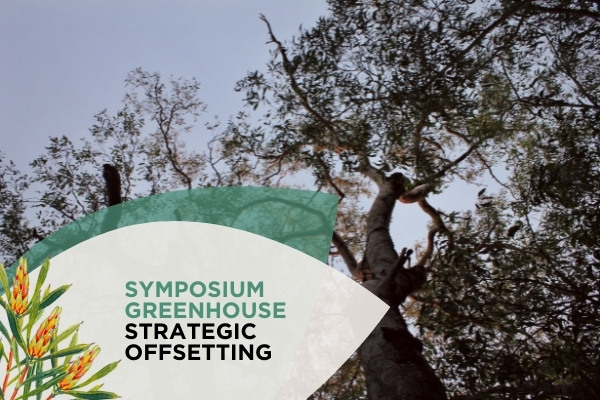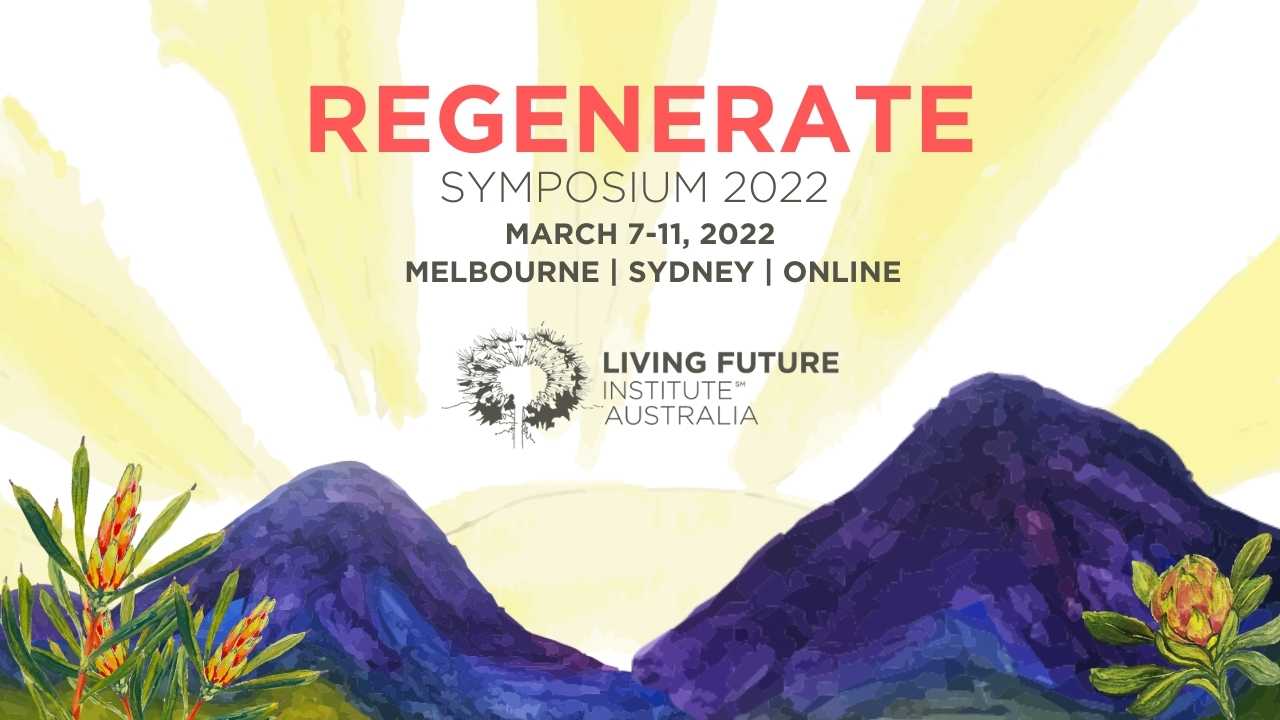
Sarah Lawlor is an architect, LFIA Member and writer for our Symposium Greenhouse series.
As momentum builds towards net zero and more organisations shift their operations and building projects to carbon neutral, the carbon offset market has expanded to meet growing demand, with offsets often an integral component in meeting carbon neutral commitments. The Living Future Institute Australia (LFIA) held their second Symposium Greenhouse workshop on the 9th November, exploring the potential of strategic offsetting. Speakers Jay Van Rijn of Greening Australia and Christopher Ewing of WWF led the discussion, which covered an overview of the carbon market, and quickly turned to how we can find additional value in carbon offsets.
At the outset, it is important to address that offsets should not be doing the heavy lifting to right projects’ carbon balance sheets; only when all strategies to reduce emissions have been exhausted should we look to offsetting. As Bonnie Waring writes for The Conversation, ‘there aren’t enough trees in the world to offset society’s carbon emissions and there never will be.’ The offset market has been widely criticised as offering companies an easier pathway towards carbon neutral, without needing to significantly change their activities. To avoid this, guidance on the type of emissions that carbon credits can appropriately offset is now embedded in voluntary certification schemes, including the Living Building Challenge. We need to radically transform the way we build to reduce our impact on the environment. However, where there are unavoidable emissions, perhaps due to technological or cost constraints, carbon credits can be purchased as an offset, helping to fund sustainable activities globally.
The cost, quality and impact of carbon credits vary greatly. The carbon offset market, which in its development was shaped by legislated and Government purchasing and least cost procurement policies, is now transitioning to comprise a larger proportion of voluntary purchasers. Where taxpayers were financing the purchasing of carbon credits, price suppression was the primary imperative, and other characteristics that can contribute to more holistic value, like transparency and reporting, with their associated additional costs, were limited. As the voluntary market grows, increased demand from a variety of buyers is starting to shift a previously price-driven offering to prioritise other forms of value. Beyond a simply transactional market where buyers receive an intangible credit and associated serial number, there is an opportunity to provide greater connection and impact in the work being financed by carbon credits.
The following list identifies characteristics to be considered when purchasing carbon credits to extract greater value. While some of these categories may be difficult to track in the current market as it undergoes a period of transformation, demand from buyers will incentivise credit providers to improve their offerings. So, read this list like a wish-list to the market for what good carbon offsetting looks like:
1) Independent Certification
The carbon market is self-regulated, and without a singular verification program. Currently, the only way to check legitimacy is to engage an independent service to run an audit, which is of course cost prohibitive for most buyers, and makes it difficult to transact in this space with confidence. At a minimum, suppliers should be signatories to the Australian Carbon Industry Code of Conduct, which is a voluntary code administered by the Carbon Market Institute. Signatories to the code must commit to conduct their operations in accordance with best practice, which aims to support market integrity, consumer protection, and fair relationships with project stakeholders, including Native Title holders, community groups, and land managers.
2) Transparency and Reporting
The carbon market is a relatively small environmental industry, and has been operating under-resourced in a price-driven market, where providers’ priority was to keep costs low. As the market expands, there is significant complexity in extracting comparable information and reporting, so that buyers can easily and accurately compare credits. Measurability is often required to prove authenticity, however, just because something is authentic, doesn’t mean that it’s easy to measure. As buyers, we need to demand transparency and accountability and drive a higher standard of reporting, acknowledging that this will impact price.
3) Nature-Based solutions
Carbon Credits are available in a number of forms, including emissions avoidance, such as projects that replace fossil-fuel derived energy with renewable sources, carbon sequestering that removes carbon from the atmosphere, for example by planting trees, or by capturing and removing emissions. Within these categories, nature-based solutions play a critical dual role in combining the removal of carbon with other environmental benefits, including the conservation and restoration of natural ecosystems and stronger resilience to climate change impacts. When looking to invest in nature based solutions, it is important to choose quality projects that have carefully considered the location and impacts on community, as well as appropriate support for biodiversity. When implemented well, nature based solutions can do more than simply avoiding or sequestering emissions, but provide an ongoing dividend over time in their continuing contributions to the natural ecosystem.
4) Stacking of co-benefits
There is opportunity in the carbon market to fund projects that support a range of co-benefits that contribute towards many of the UN’s Sustainable Development Goals, including access to education support for improved health and wellbeing, or regeneration of natural environments. There have previously been barriers to ‘stacking’ or double-counting credits that prevented the integration of carbon and biodiversity credits, which are currently run as separate markets. While there are some structural issues to be resolved to improve integration, these stacked credits provide additional value, and can interface to both reduce emissions and improve biodiversity.
5) Support for Communities
One potential co-benefit of carbon credits is support for communities, where local or community-based solutions can provide additional socioeconomic benefits. Benefits could include education and training opportunities, supporting livelihoods or creating alternative income streams, and increasing resilience in communities vulnerable to the impacts of climate change. The Australian carbon market includes credits for projects located around the world, including in less economically developed countries, where there is often opportunity for well-implemented projects to create significant impact for local communities. Closer to home, we can choose to fund projects that support First Nations Peoples and communities, including restoration of native habitats to buffer the effects of natural disasters and variable climate. Rising emissions is a global problem, so it doesn’t matter where projects funded by credits are located; strategic selections of offsets can have a tangible impact on communities most in need.
The scope for increased value and impact of carbon credit purchases is vast, and as buyers, we have the ability to shape the market and identify the complimentary goals that are important to us.
In their edited collection, All We Can Save: Truth, Courage and Solutions for the Climate Crisis,(2020), Ayana Elizabeth Johnson and Katherine K. Wilkenson urge environmental action that concurrently addresses a multiplicity of intertwined issues. They write: “There is a commitment to responding to the climate crisis in ways that heal systematic injustices rather than deepen them.” In every choice we make, we can choose to support work that contributes to holistic healing of our natural and social environments. Our investment in carbon credits can be seen as a way to help build the kind of world worth saving, where biodiversity, community and equity are prioritised.

Sarah Lawlor is an Associate and registered architect at fjmtstudio. In 2020, Sarah was awarded the National Association of Women in Construction (NAWIC) International Women’s Day Scholarship for her research project ‘Is Sustainability Leadership in the Built Environment Women’s Business?’, and was a finalist in the Green Building Council’s 2021 Future Green Leader Award. Sarah is co-chair of the Australian Institute of Architects NSW Chapter Editorial Committee for the Architecture Bulletin, and hosts the Design Conscious podcast.

The Symposium Greenhouse workshops planted the seeds of the ideas that we’ll explore at the Symposium. On day three, we’ll elaborate on the energy theme with a focus on Net-Zero. Tickets to our Symposium are on sale now.

